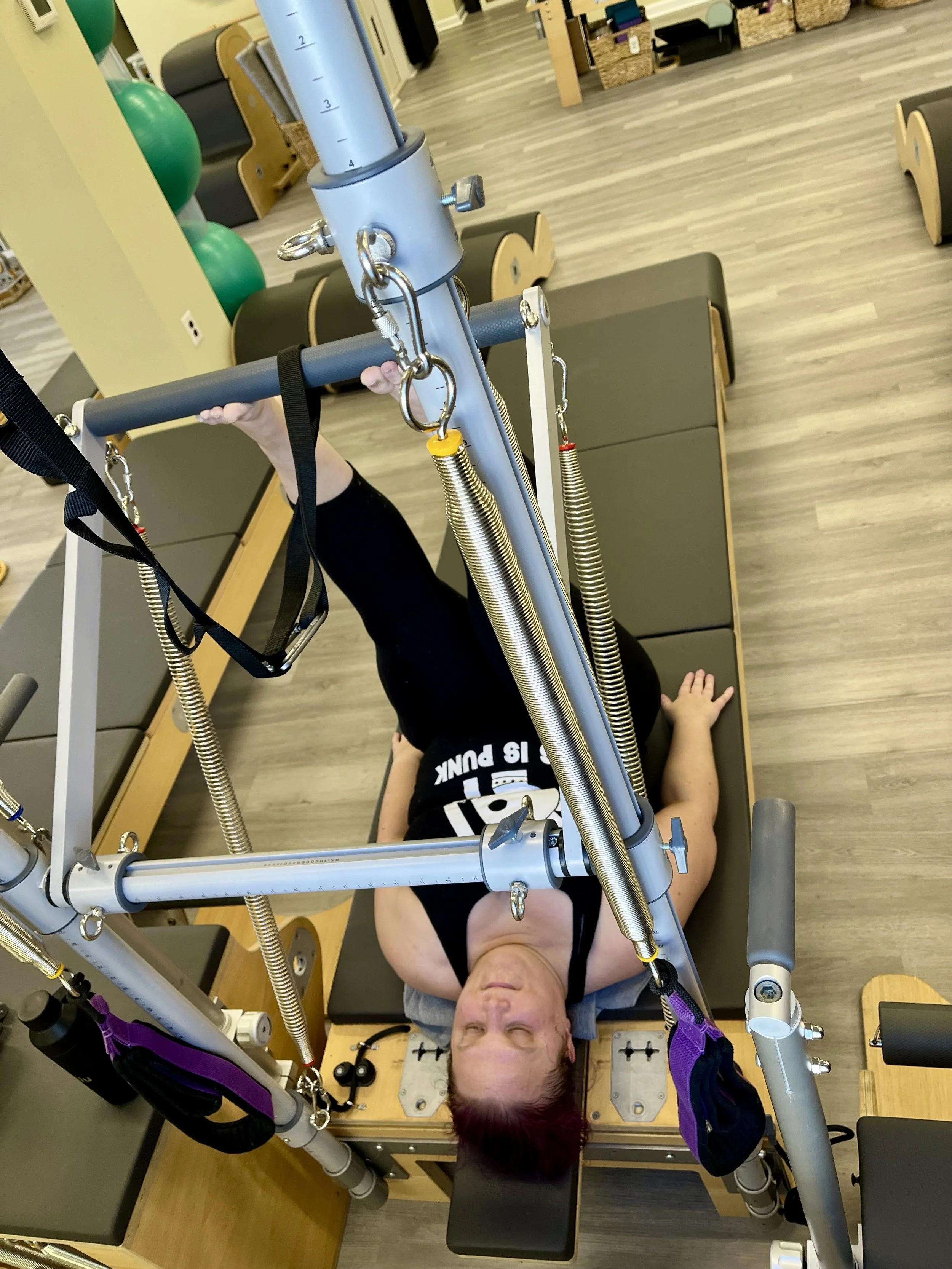Why Pilates Reformer Fans Should Try a Tower Class
by Ani Bundel
Until I took my first pilates class in 2014, I assumed it was a variant of yoga. It’s an understandable mistake; Amazon sells “Pilates” home workout gear that looks (if not is) the same as Yoga equipment, and pre-social media, most celebrities (like Madonna) endorsed Pilates in magazines by posing on the Mat.
A decade later, TikTok influencers and YouTube trainers have done much to correct this impression, putting the Pilates Reformer front and center. However, like their predecessors centering the Mat, this focus on the Reformer offers only a narrow view of the practice. There are so many other ways to experience a Pilates workout, including the Tower, the Spine Corrector, the Ladder Barrel, and Wunda Chair. Moreover, those who only ever take Reformer classes are missing out on an opportunity to come at their workouts from a different, and sometimes eye-opening, angle.
There are two types of Pilates Towers: Wall Units (the ones mounted on the wall, obvs) and Combo Units (where the Tower is attached to the reformer). Though I am fond of the wall-mount versions, the Combo Unit will feel more familiar to anyone who has ever taken a one-on-one class on a Pilates Cadillac. The real name of the Cadillac is “Trapeze Table,” and the Combo Unit is sometimes referred to as the “Half Trapeze Reformer” because, in essence, you’re adding a smaller version of one side of a Cadillac to your Reformer.
Footwork on the Pilates Tower at Epiphany Movement Center in Fairfax, VA.
The Towers at Epiphany are Combo Units; I hit my first class expecting it to be a bit experimental. However, I was not prepared for how much it would alter something as basic as Footwork.
Listen, every Pilates student knows Footwork. It doesn’t matter what sort of class it is – Mat, Barre, Chair, Reformer – at some point in every class, everyone either sits down or lies down with their feet hip-width distance, their heels on the Footbar or the floor, pushing out fast and s-l-o-w-l-y drawing back in. But in all of those variants, one constant remains: you push down or out.
The Tower, on the other hand, puts you on your back with the “Push-thru Bar” above you, forcing you to push up as you hold the angle of your ankles steady. Moreover, your tailbone is no longer automatically situated in a way that makes it easy to keep planted. For the first time in my life, all that talk about your “posterior chain” doing the work finally clicked, because I wasn’t just shoving a bar down and away with my body weight. I was trying to push the bar up with the backs of my (insanely tight) hamstrings and calves, without allowing any part of my upper body to help, since it was already double-occupied trying to keep my backside from lifting off the carriage.
The entire class went like that. Sidelying Series with your top leg in the loop felt completely different (and was difficult in all new ways), because the pulley angle is so much higher. Roll-ups got easier because I now had that Push-thru Bar above me to hang on to. Teaser Prep also got easier on my upper body for the same reason, but was far harder on my abs and legs because now they had to do all the work.
Finally, there was my nemesis—the Pelvic Curl (sometimes called a Bottom Lift), aka the Glute Bridge. On a regular Reformer, I spend most of the “Bridge” series quietly (or not so quietly) trying not to die as I struggle to get my hips up and then put them back down “with control” (or in my case, with a loud whump as I collapse). However, Pelvic Curl on the Tower brings in the “Roll-down Bar” under your knees, helping to keep them in alignment (no foot pronation), and, most importantly, pulls them ever so slightly forward, forcing my body to use only my glutes, inner thighs, and hamstrings to perform the work. It was the first time I could finally do a Pelvic Curl properly, a thing it turned out I had been incapable of achieving on any other apparatus, because there was always some muscle group that could bully its way through my form, no matter how hard I tried.
Tackling the Pelvic Curl with Roll up Bar on the Pilates Tower
I’m not saying it was fun exactly. (My inner thighs threw a fit and a half at being forced to do something other than jiggle.) But it was a lightbulb moment after a full decade of never being able to conquer one of the Pilates basics. And I’ll definitely be back to see what other revelations I can find simply by turning the work 90 degrees.
Ani Bundel
Ani Bundel has been blogging professionally since 2010. A DC native Keyboard Khaleesi, she spends her non-writing time taking pictures of her cats and trying to memorize GYROKENESIS® sequences. A Woman's Place Is In Your Face. Cat Approved. Find her on BlueSky and other social media of your choice: @anibundel.bsky.social


